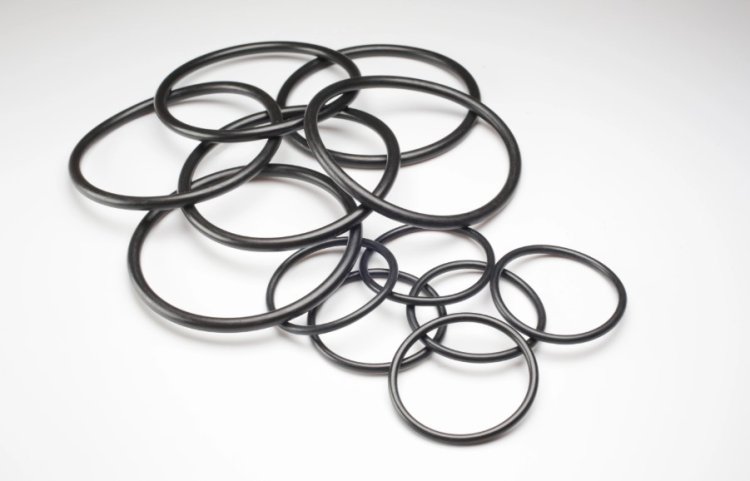The Unsung Heroes of Sealing: Everything You Need to Know About O-Rings
In this article, we'll explore the world of O-rings, their function, applications, and why they’re the unsung heroes of countless industries.

When you think of cutting-edge technology or breakthrough innovations, it’s unlikely that O-rings come to mind. Yet, these simple, circular seals are quietly at the heart of some of the most advanced and vital systems we rely on every day. Whether it's a car engine, a spacecraft, or even medical devices, O-rings are there, ensuring everything stays airtight, leak-free, and functioning optimally.
In this article, we'll explore the world of O-rings, their function, applications, and why they’re the unsung heroes of countless industries.
What is an O-Ring?
An O-ring is a circular, elastomeric seal used to prevent the passage of liquids or gases. Made from various materials such as rubber, silicone, or fluorocarbon, these rings are designed to compress between two mating surfaces, creating a tight seal. Despite their humble design, O-rings are incredibly effective at keeping pressure in or out, making them indispensable in countless mechanical and industrial systems.
The Science Behind O-Rings: How They Work
At the core of every O-ring is its compression mechanism. When an O-ring is installed, it’s slightly compressed between two surfaces. This creates a force that pushes the O-ring against the surfaces, preventing leakage. The materials used for O-rings have the unique ability to return to their original shape after compression, ensuring a long-lasting, tight seal under varying pressures and temperatures.
Industries That Rely on O-Rings
O-rings play a crucial role in numerous industries:
-
Automotive: From engines to fuel systems, O-rings keep fluids and gases from escaping, ensuring the vehicle’s efficiency and safety.
-
Aerospace: In aircraft, O-rings help seal everything from fuel lines to hydraulic systems, ensuring that no critical systems fail during flight.
-
Oil and Gas: O-rings are used extensively to maintain leak-proof connections in pipes and valves, preventing costly and dangerous spills.
-
Medical: Devices such as syringes and IV pumps use O-rings to maintain sterility and ensure the safe delivery of medicines.
-
Food and Beverage: With strict hygiene standards in this industry, O-rings ensure no contamination during production and packaging.
Common Problems and O-Ring Failures
While O-rings are incredibly reliable, they are not immune to failure. Some common causes of O-ring issues include:
-
Improper installation: A misaligned O-ring can cause leaks or even damage the seal.
-
Material incompatibility: Exposure to extreme temperatures, chemicals, or other environmental factors can degrade the O-ring material.
-
Wear and tear: Over time, O-rings can lose their elasticity, leading to poor sealing performance.
Choosing the Right O-Ring for the Job
Selecting the correct O-ring isn’t as simple as picking one from a catalog. Key factors include size, material compatibility with the application, hardness, and environmental conditions (temperature, pressure, chemical exposure). A high-quality O-ring supplier can help guide you to the right choice to ensure optimal performance.
O-Ring Maintenance and Lifespan
O-rings, like any mechanical component, need maintenance. Regular inspection can help identify wear and tear before it leads to a failure. Ensuring that O-rings are properly lubricated, stored, and installed can extend their lifespan. Replacing them at the first sign of wear can prevent costly repairs down the line.
Innovations and Future Trends in O-Ring Technology
O-ring technology has come a long way since its creation. New materials are being developed to handle more extreme conditions, from higher pressures to harsher chemicals. Additionally, innovations such as smart O-rings, which can monitor conditions and alert operators to wear, are paving the way for predictive maintenance.
Moreover, with sustainability on the rise, many manufacturers are working on eco-friendly materials to reduce the environmental impact of O-rings.
Conclusion
O-rings may not get the recognition they deserve, but they are integral to the proper functioning of systems across industries. Whether you're in the automotive, aerospace, medical, or oil and gas sectors, ensuring the right O-ring is used for every application is essential for safety, reliability, and efficiency. Next time you encounter an O-ring, take a moment to appreciate this simple yet vital component, keeping our world running smoothly.
What's Your Reaction?


















.jpg)